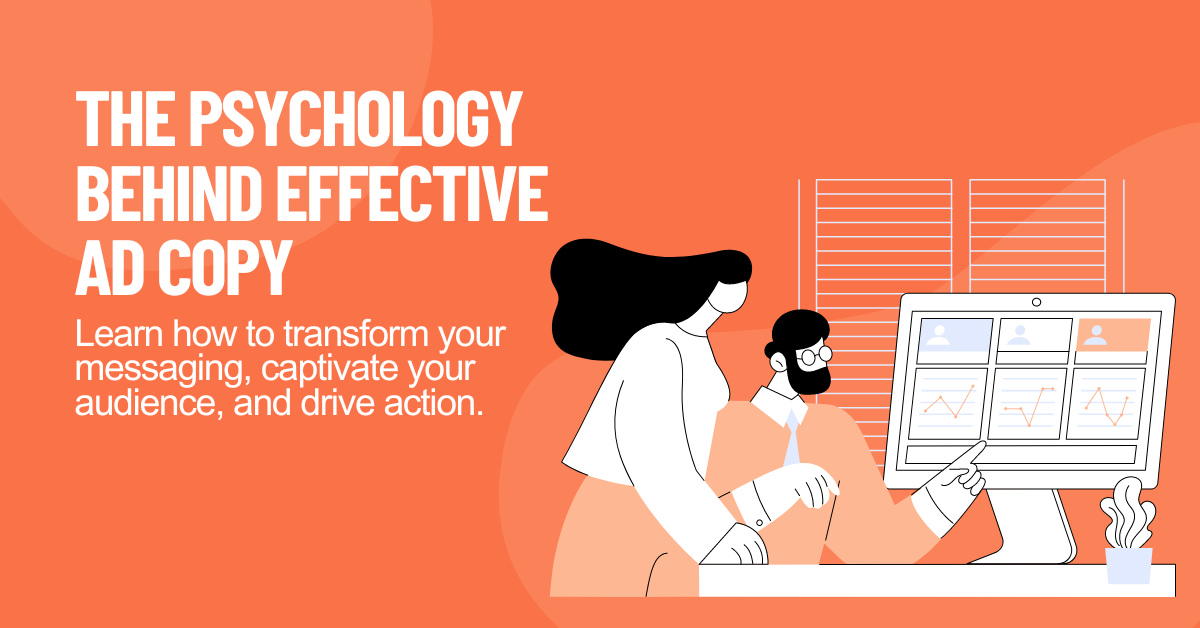
Crafting effective ad copy that drives conversions is a blend of art and science. At its core, it’s about understanding the psychology of your audience and leveraging that knowledge to craft messages that resonate, engage, and persuade.
Here’s a deep dive into the psychological principles that can transform your ad copy from good to great.
The Power of Persuasion
Dr. Robert Cialdini’s six principles of persuasion are foundational to effective ad copy.
Let’s break them down:
Reciprocity
People feel obliged to return favors. Offer something valuable for free, like a helpful guide or a discount, and your audience is more likely to respond positively to your call to action.
Commitment and Consistency
Once people commit to something small, they are more likely to stick to it and make larger commitments. Encourage small, initial engagements like signing up for a newsletter, which can lead to bigger actions like making a purchase.
Social Proof
Humans are social creatures; we look to others to determine our actions. Show testimonials, reviews, and user-generated content to build trust and credibility.
Authority
People trust experts. Use endorsements, certifications, and expert opinions to enhance your credibility and influence.
Liking
We are more likely to be swayed by people we like. Use friendly, relatable language and highlight commonalities with your audience.
Scarcity
Limited availability increases perceived value. Highlight scarcity, such as limited-time offers or exclusive products, to create urgency.
Emotional Appeal
Emotions drive decisions more than logic. Here’s how to tap into that:
Fear of Missing Out (FOMO)
Highlight what your audience stands to lose by not taking action. This could be a missed discount, a limited offer, or an exclusive experience.
Aspirations and Desires
Tap into your audience’s dreams and desires. Paint a picture of how your product or service can help them achieve their goals or improve their lives.
Pain Points
Address the problems your audience is facing and position your offering as the solution. Empathy goes a long way in building connections.
Cognitive Biases
Understanding cognitive biases can help craft more compelling ad copy:
Anchoring
People rely heavily on the first piece of information they see. Start with a high anchor (like a crossed-out original price) to make your actual price seem more attractive.
The Bandwagon Effect
People tend to do what others are doing. Show how popular your product is to encourage others to join in.
The Endowment Effect
People value things more highly if they feel ownership over them. Use language that makes your audience feel like they already own the product (e.g., “Your new car is waiting”).
The Right Language
The words you choose matter. Here are some tips:
Use Active Voice
Active voice is direct and engaging. Instead of “Our products are loved by customers,” say “Customers love our products.”
Power Words
Words like “guaranteed,” “exclusive,” “instant,” and “free” trigger strong emotional responses. Use them to make your copy more persuasive.
Clarity and Simplicity
Keep your message clear and simple. Avoid jargon and complex sentences. Your audience should understand your message at a glance.
Storytelling
Humans are wired for stories. They create emotional connections and are memorable. Create an engaging story around your brand or product. Highlight customer success stories, or tell the story of your brand’s journey and values.
Conclusion
Effective ad copy is rooted in understanding human psychology. By leveraging principles of persuasion, emotional appeal, cognitive biases, and strategic language use, you can craft messages that not only capture attention but also drive action.
Remember, the key is to connect with your audience on a deeper level, addressing their needs, desires, and pain points.
If you’re unsure where to start, consider partnering with a Digital Marketing Agency.
Check out our blog about the 6 Advantages of working with a Digital Marketing Agency.
